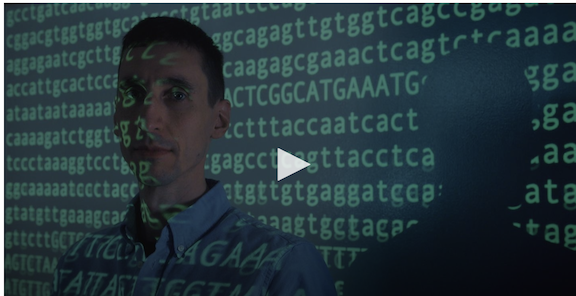I am very pleased to announce that my lab has joined the Bakar Computational Health Sciences Institute and Department of Epidemiology and Biostatistics at UCSF!
For more news and future updates, follow the lab on twitter: @capra_lab.
I am very pleased to announce that my lab has joined the Bakar Computational Health Sciences Institute and Department of Epidemiology and Biostatistics at UCSF!
For more news and future updates, follow the lab on twitter: @capra_lab.
Our recent work on understanding the legacy of interbreeding between Neanderthals and humans is featured in a new PBS/BBC documentary called Neanderthal. The crew spent a day on campus and toured the lab, the BioVU biobank, and the ACCRE computer cluster. We are very grateful for this opportunity to share our work with a broad audience. The two-part series airs on PBS on Wednesday October 17 and 24. The main segment on our work is in the second part. For a taste, check out this clip:

https://www.pbs.org/video/our-neanderthal-legacy-fzy4zy/
Congratulations to Ling and Alex on their paper being published in PLOS Computational Biology. They developed a machine learning approach to model the DNA sequence properties of gene regulatory enhancers and then quantify the conservation of enhancers’ sequence properties across diverse mammalian species. They demonstrate deep conservation of enhancer sequence properties despite the rapid turnover of the specific genomic regions that have enhancer activity. This work has broad relevance to our understanding of enhancer sequence architecture and the prediction of the effects of non-coding mutations on function within and between species. Check it out:
Prediction of gene regulatory enhancers across species reveals evolutionarily conserved sequence properties
We are very pleased to welcome new graduate student Evonne McArthur to the lab. Evonne is a MD/PhD student joining the Human Genetics program. She is interested in the role of structural and regulatory element variation in risk for both rare and common diseases. She graduated from the University of North Carolina at Chapel Hill with a B.S. in Quantitative Biology.
The Vanderbilt Undiagnosed Diseases Network (UDN) site has been renewed by the NIH for four more years. The UDN’s purpose is to bring together clinical and research experts from across the United States to solve the most challenging medical mysteries using advanced technologies. We look forward to continuing to collaborate with our UDN colleagues to interpret genetic variants identified in patients.
We are very excited that two new graduate students, Keila Velázquez-Arcelay and Sarah Fong, have joined the lab! Keila is joining the Biological Sciences program and will focus on recent human evolution. Sarah is joining the Human Genetics program and will work on how gene regulatory enhancers evolve and establish cell fate.
I was recently interviewed by the American Journal of Human Genetics about our recent paper on the spatial distribution of genetic variants in protein structures. Check it out on the AJHG Blog!
Congratulations to recently graduated PhD student Mike Sively on publication of two papers describing his work on the spatial distribution of human genetic variation in protein 3D structures and models. The first, published in the American Journal of Human Genetics, describes a comprehensive analysis of more the four million genetic variants in their structural contexts. We found that pathogenic and benign variants exhibit different patterns of spatial constraint, and that these patterns can be informative about protein function:
Comprehensive Analysis of Constraint on the Spatial Distribution of Missense Variants in Human Protein Structures
The second paper describes an application of the analysis of the spatial distribution of pathogenic and benign variants to characterized uncharacterized variants in RTEL1 identified in patients with pulmonary fibrosis. Our new PathProx performs competitively with popular methods for pathogenicity prediction and suggests specific hypotheses for how variants influence protein function:
Three-dimensional spatial analysis of missense variants in RTEL1 identifies pathogenic variants in patients with Familial Interstitial Pneumonia
Congratulations to Dr. Mike Sivley on successfully defending his PhD! His dissertation is titled “Constraint on Rare Protein-Coding Variation: Pathogenicity Prediction and Phenotypic Discovery.”
Alex’s paper on how mismatches in local genetic ancestry along the genome in admixed individuals can influence associations between genetic variants and traits has just come out in the 2018 Proceedings of the Pacific Symposium on Biocomputing. In this manuscript, we develop a model that captures the effect of both single variants and local ancestry on traits of interest, and use it to identify examples where local ancestry transitions significantly interact with nearby variants to influence metabolic traits. Check it out!